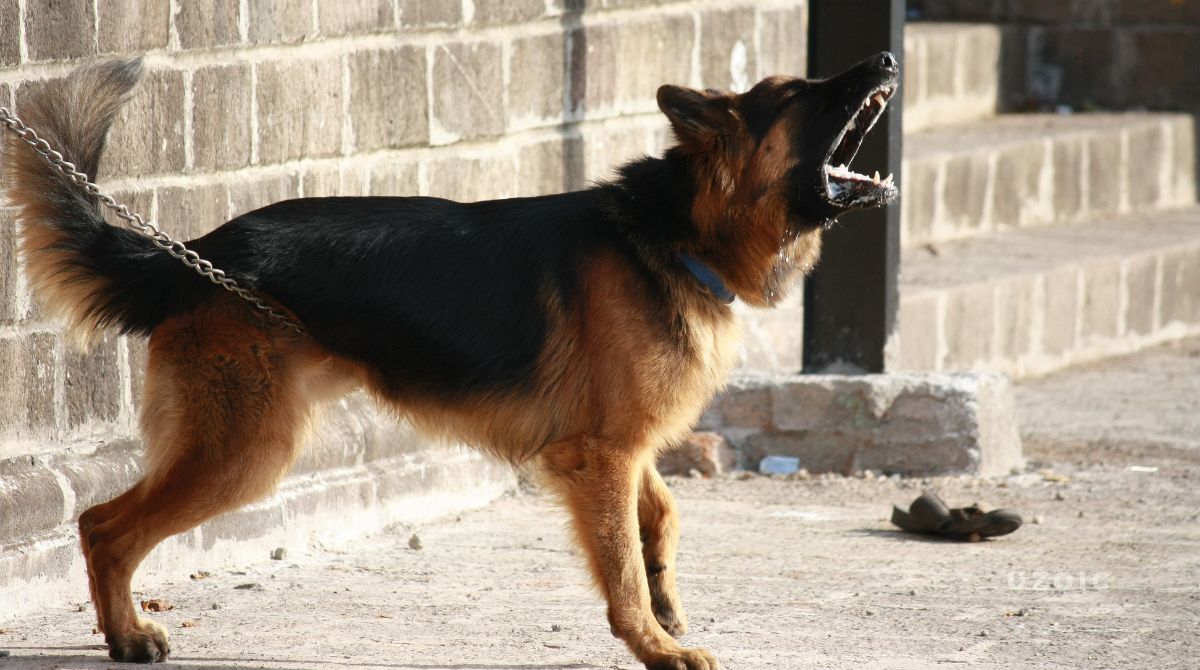Dealing with an aggressive dog can be challenging and stressful. However, with patience, consistency, and proper training techniques, it is possible to help your furry friend overcome their aggression and become a happier and well-behaved companion. In this guide, we will provide you with valuable tips on how to tame an aggressive dog and restore peace and harmony to your home.
Table of Contents
Identify the Root Cause
Understanding the underlying cause of your dog’s aggression is crucial in addressing the issue effectively. Aggression can stem from various factors such as fear, territorial behavior, past trauma, or lack of socialization. Observe your dog’s triggers and consult with a professional, such as a veterinarian or animal behaviorist, to help identify the root cause and develop a tailored training plan.
For example: If your dog displays aggression when approached while eating, it could indicate resource guarding behavior. To address this, start by feeding your dog in a separate, quiet area and gradually introduce people nearby while rewarding calm behavior. This helps them associate the presence of people with positive experiences.
Consult a Professional
Seeking guidance from a professional is essential when dealing with an aggressive dog. A certified dog trainer or animal behaviorist can assess your dog’s behavior, provide valuable insights, and guide you through the training process. They can also help you implement appropriate techniques to address aggression and ensure your safety and the well-being of your dog.
For example: Suppose your dog exhibits aggression towards strangers or other dogs during walks. Seek assistance from a professional trainer who can guide you through desensitization and counterconditioning techniques. They may advise starting at a distance where your dog remains calm and gradually decreasing the distance over time.
Establish Consistent Rules and Boundaries
Consistency is key in modifying your dog’s behavior. Establish clear rules and boundaries that you consistently enforce. Dogs thrive on structure, so creating a predictable and structured environment helps them feel secure and reduces their need to display aggressive behavior. Communicate and reinforce these rules with everyone in your household, ensuring a unified approach to training.
For example: To address territorial aggression, establish boundaries around the home. Teach your dog to stay in designated areas and reward them for respecting those boundaries. Consistently reinforce the rules with everyone in the household, ensuring your dog understands what is expected of them.
Positive Reinforcement Training
Positive reinforcement is a powerful tool when taming an aggressive dog. Rewarding desired behaviors with treats, praise, and playtime encourages your dog to repeat those behaviors. Use rewards to reinforce calm and non-aggressive responses, redirecting their focus from aggressive triggers. This method builds trust and fosters a positive association with appropriate behavior.
For example: If your dog becomes aggressive when meeting new people, use positive reinforcement techniques to encourage desired behavior. When introducing your dog to a visitor, ask them to offer treats or engage in a game with your dog. This creates a positive association with new people and reduces anxiety or aggression.
Controlled Socialization
Proper socialization plays a significant role in reducing aggression. Gradually introduce your dog to new experiences, environments, and other dogs under controlled circumstances. Start with calm and controlled interactions, rewarding your dog for calm behavior. Gradually expose them to various stimuli, helping them develop confidence and positive associations.
For example: Suppose your dog shows aggression towards other dogs. Start by arranging controlled playdates with well-socialized dogs in a neutral territory. Keep the initial interactions short and reward your dog for calm and friendly behavior. Gradually increase the duration and intensity of the play sessions as their behavior improves.
Avoid Punishment and Harsh Techniques
Punishment-based training methods can exacerbate aggression and damage the bond between you and your dog. Avoid physical punishment, yelling, or intimidating tactics as these can increase fear and defensive behaviors. Instead, focus on positive reinforcement and redirection techniques to encourage desirable behavior and build trust.
For example: If your dog growls or snaps when approached while resting, avoid punishing them. Instead, teach them a “go to your bed” command and reward them for going to their designated resting area. This way, they learn to associate relaxation with a safe space and are less likely to display aggression when disturbed.
Implement Desensitization and Counterconditioning
Desensitization and counterconditioning are valuable techniques for addressing specific triggers that provoke aggression in your dog. Gradually expose your dog to the trigger at a distance that does not elicit aggression. Pair the presence of the trigger with positive experiences, such as treats and praise. Over time, gradually decrease the distance, helping your dog develop a positive association and reduced reactivity.
For example: Suppose your dog becomes aggressive around bicycles. Start by exposing them to bicycles from a distance where they remain calm and reward them for relaxed behavior. Gradually decrease the distance while maintaining a positive and rewarding experience, helping them associate bicycles with positive outcomes.
Use Muzzle or Safety Measures
In situations where safety is a concern, such as during introductions to unfamiliar people or animals, consider using a muzzle. A properly fitted muzzle ensures the safety of others while providing you with peace of mind. Remember, a muzzle should not be used as a long-term solution but as a temporary measure until your dog’s behavior improves.
Maintain a Calm Environment
A calm and stress-free environment contributes to managing aggression. Minimize exposure to situations or stimuli that trigger aggression, and create a peaceful space for your dog to relax. Incorporate activities that promote mental and physical stimulation, such as puzzle toys and regular exercise, to help reduce anxiety and redirect energy in a positive way.
Training an aggressive dog
Training an aggressive dog requires a structured approach that focuses on building trust, establishing boundaries, and redirecting negative behaviors.
Here are five general steps to consider when training an aggressive dog:
- Consult a Professional: The first step in training an aggressive dog is to seek guidance from a professional dog behaviorist or trainer. They can assess your dog’s behavior, identify the underlying causes of aggression, and develop a training plan specific to your dog’s needs. They will provide you with the necessary tools and techniques to address the aggression safely and effectively.
- Establish Leadership and Boundaries: Aggressive dogs often benefit from a clear leadership structure and well-defined boundaries. Take on the role of a calm and assertive leader in your dog’s life. Set consistent rules and boundaries that you enforce consistently. This helps establish trust and creates a sense of security for your dog, reducing their need to display aggressive behaviors.
- Implement Positive Reinforcement: Positive reinforcement techniques, such as rewarding good behavior with treats, praise, or play, can be highly effective in training an aggressive dog. Focus on rewarding your dog for calm, non-aggressive behaviors and redirecting their attention when they show signs of aggression. This encourages them to make positive associations and reinforces desired behaviors.
- Use Desensitization and Counterconditioning: Desensitization and counterconditioning techniques can help your dog overcome specific triggers that elicit aggression. Gradually expose your dog to the trigger at a distance that doesn’t provoke aggression, while simultaneously providing positive experiences, such as treats or play. Over time, gradually decrease the distance between your dog and the trigger, helping them develop a more positive and relaxed response.
- Provide Physical and Mental Stimulation: Regular physical exercise and mental stimulation are crucial for an aggressive dog. Engage your dog in activities such as daily walks, interactive games, and puzzle toys to channel their energy in a positive way. A tired and mentally stimulated dog is less likely to display aggressive behaviors.
Remember, training and taming an aggressive dog requires patience, consistency, and professional guidance. It’s important to prioritize the safety of yourself, others, and your dog throughout the training process. Always consult with a professional to ensure you are using the most appropriate and effective techniques for your dog’s specific needs.


